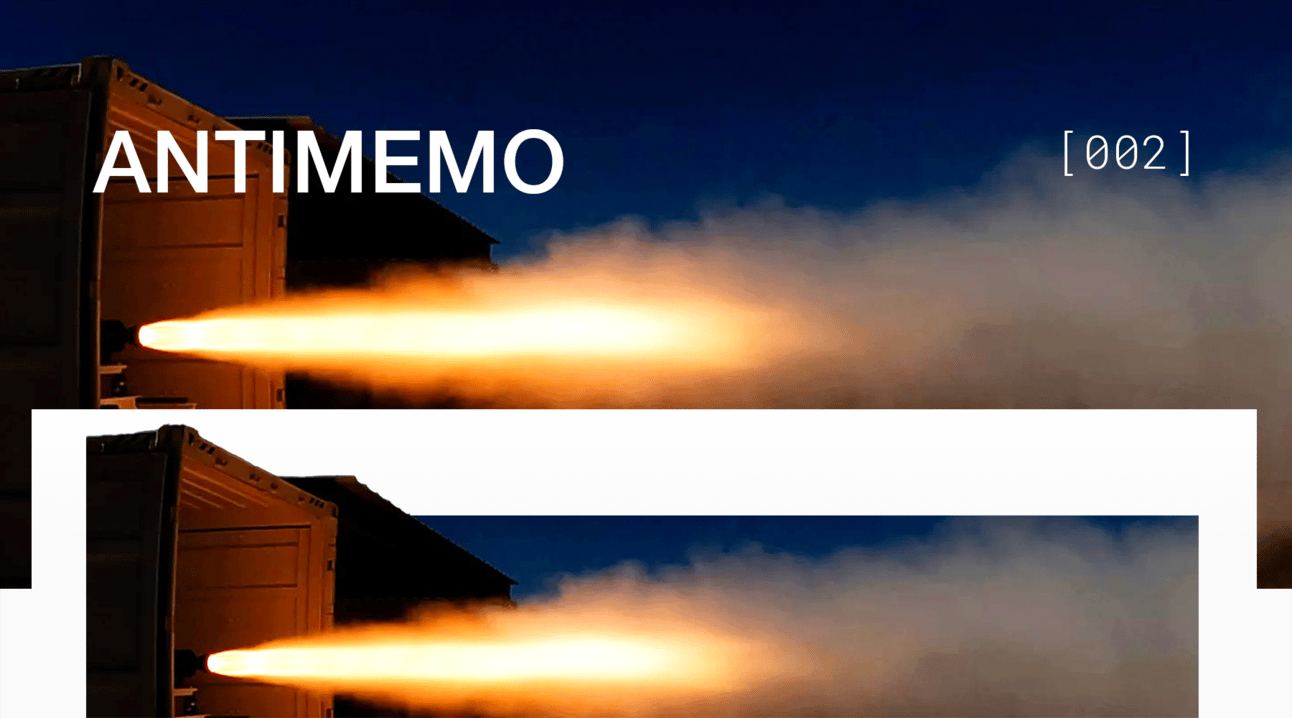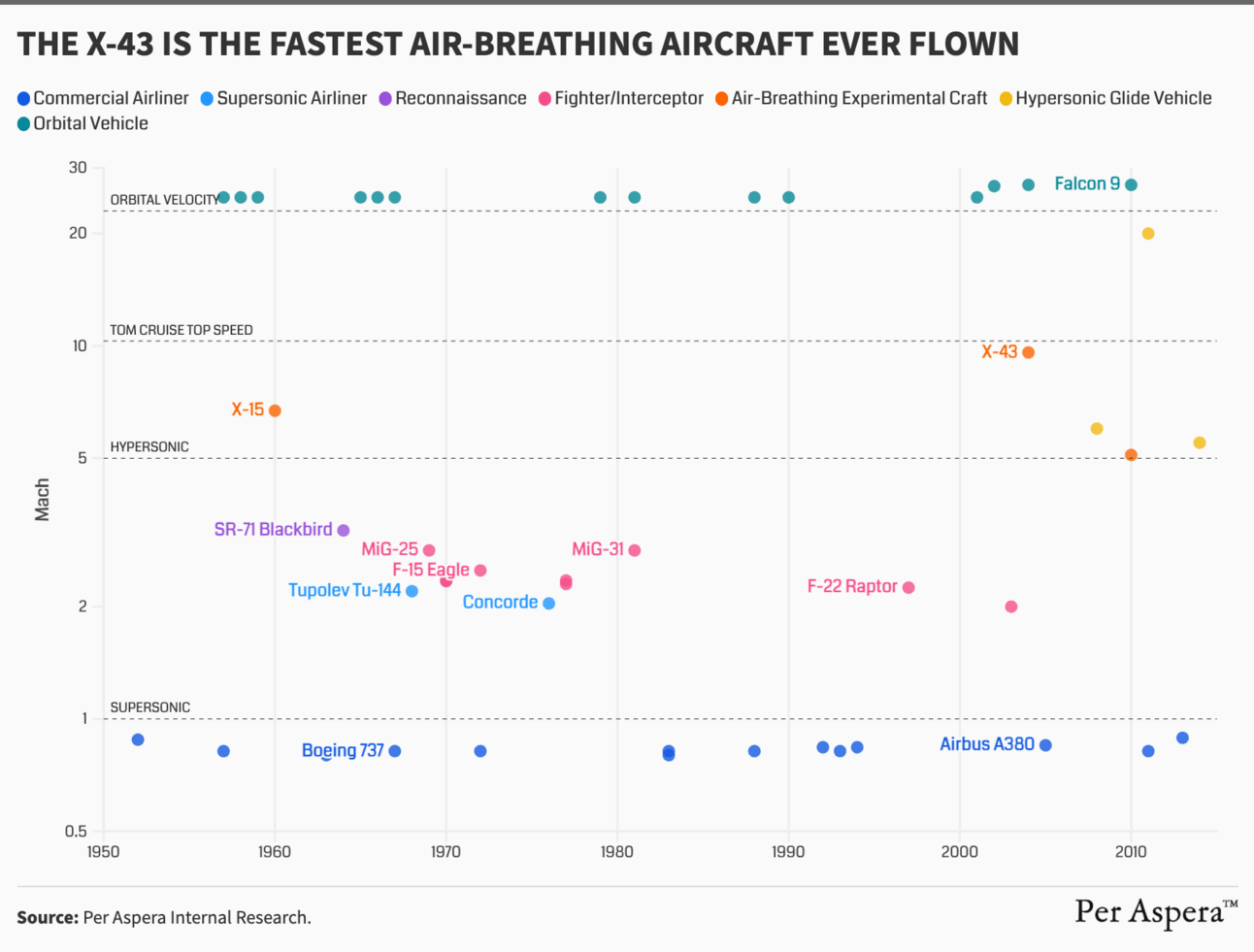
🇺🇸💥 Good morning! It’s Ryan Duffy — Editor-in-Chief of Per Aspera. Friday marked the 249th birthday of the American republic, and as of last week, we’re closer to 2050 than we are to 2000. In that spirit, today we’re looking at a domain where national ambition, industrial policy, and strategic clarity all collide.
Few domains test those qualities more than “hypersonics,” a word that’s launched a thousand think pieces and almost as many misconceptions. The buzz has bred doctrinal drift, funding misfires, and program paralysis. So, we called in Mark Lewis, one of our country’s true hypersonic experts. As former Chief Scientist of the United States Air Force and now CEO of the Purdue Applied Research Institute, Mark is one of the few people in the country who can cut through the noise.
Together, we’ve worked to create what is hopefully a clarifying antimemo in a very hyped and muddied space. We can’t wait to hear what you think.



Per Aspera’s “ANTIMEMO” series aims to provide actionable clarity and signal, rather than more noise, for those driving the Renaissance forward.
Why aren’t we flying faster? When the filmmakers behind Top Gun: Maverick set out to open with a bang, they asked: What’s the most thrilling, boundary-pushing aircraft we could plausibly put on screen? In the film’s first minutes, Tom Cruise straps into a needle-nosed experimental jet, lights the engines, and punches past Mach 10, right before the “Darkstar” aircraft disintegrates in the upper atmosphere. Fictional as it was, Darkstar wasn’t pure fantasy. Hollywood chose a hypersonic aircraft because it felt like the edge of what’s possible: exhilarating, credible, and distinctly American.
After all, we’ve done this before.
We’ve built scramjets. We’ve flown reusable rocketplanes. We hit Mach 9.6 (~7,300 MPH) with the X-43 in 2004 — the fastest air-breathing flight in history. Nobody has touched it since. Our very own Dan Goldin, who was the driving force behind that program, has this to say: “I want to see America break that record in my lifetime.”
For decades, we’ve led and then quietly walked away from the most radical flight breakthroughs of the modern era. Now, as rivals field operational systems, hypersonics are back in the headlines. But the public conversation remains a confused blur of Hollywood, jargon, and alarmist headlines.
Today’s antimemo brings clarity.
We aim to set the record straight: unpacking what hypersonics are (and aren’t), why they matter, and how we can get serious again. A glimpse of what’s inside:
🔍 A clear taxonomy of hypersonic systems: boost-glide, air-breathing cruise, and reusable ISR/transport
✈️ A vision beyond weapons: civil transport, commercial delivery, and global presence in hours
🕰️ An honest accounting of American breakthroughs, and how we walked away from them
🛠 The technical truths, including thermal protection, blackout, propulsion, navigation, materials, and testing
🧰 Six directives to get serious: from scramjet alternatives to industrial supply chains
The physics work. The opportunity is real. What’s missing is the staying power.


“IDEAS” shares the sharp, interesting or simply fun ideas we’re seeing from across the country to accelerate the Renaissance. Here, we’ll also spotlight the collective brainpower of the Per Aspera community. We want to share what you think about the hard problems of our day, via polls, replies, sharp insights, and Ideas of the Renaissance you send our way.
This week: your ideas on autonomy. Last Monday, after our story on self-driving, we asked y’all: “Who Gets there first: Waymo, Tesla, or a third horse?” Here’s what you had to say:

Waymo led with 45.9% of the vote, followed by Tesla at 29.5%, and 24.6% backing a “third horse.”
One voter pointed to the limitations of Tesla’s software assumptions: “Their model assumes the world obeys i.i.d. data distributions. Nature doesn’t conform.”
Another argued that scale favors Tesla: “One company is producing millions of vehicles per year — the other, just a few thousand. That’s not a close race.” Another framed it around network leverage: “The network is everything — and Tesla is building that into their system design more systematically.”
Waymo supporters leaned on trust and operating maturity: “I’ve ridden in dozens of Waymos. I’d put my daughter in one.” Others noted execution discipline: “Waymo’s edge isn’t just technical — it’s operational. That’s what knocked out so many others.”
And the third-horse camp added a global lens: “The first to 100M may not be Waymo or Tesla — but a player operating in the PRC [People’s Republic of China], where scale advantages are simply unmatched.”
The real signal comes in the reasoning. Y’all are pressure-testing assumptions, interrogating business models, and mapping vectors of advantage: trust, scale, GTM, geography, and so on. That’s exactly the kind of thinking we want to elevate and amplify.
🗳️ And…if you haven’t voted yet, we’ll keep this poll open for six more days:
Who gets there first?

The Purdue Applied Research Institute (PARI) transforms breakthrough university research into mission-critical technologies that define America's competitive edge. Under Mark Lewis, an internationally recognized hypersonics expert and former Air Force chief scientist, PARI bridges the crucial gap between academic discovery and national deployment, pioneering defense technologies that ensure American technological supremacy. As an academic catalyst of the new American Renaissance, PARI ensures that innovations born in university laboratories become the strategic technologies that secure our nation's future.

Hey, it’s Jeff Crusey, your Resident Investor at Per Aspera.
Back in 2023, I backed a stealth hypersonics startup at pre-seed, with one big goal: build affordable, vertically integrated long-range strike systems. This company is now known as Castelion, based in Torrance, CA.
From day one, CEO Bryon Hargis and the Castelion team have been clear: don’t compete with legacy primes — leapfrog them. Bryon was generous enough to review today’s antimemo ahead of publication. His takeaway: “For too long, hypersonic weapons have been viewed as exotic, slow-moving science projects. At Castelion, we believe they should be affordable, repeatable, and built on an American industrial base that can scale. Deterrence doesn’t come from prototypes, it comes from volume.”
Next week, I’ll share a behind-the-scenes look at why Castelion had the rare “special right to win” I look for in founding teams, and how they moved from blueprint to full-scale test in under two years, a blistering pace even by Silicon Valley standards.
Until then, here’s to the Castelion team — and to every other agile team pushing past the status quo. The U.S. is redeploying resources to hypersonics. The old playbook of inertia is breaking. And it’s time to build 🇺🇸 😎.



“Shipbuilding, shipbuilding, shipbuilding”. The Defense Logistics Agency has awarded a $5B IDIQ contract, called the Maritime Acquisition Advancement Contract (MAAC), to six small businesses tasked with delivering parts and services for critical Navy systems, like the nuclear-powered Virginia-class attack sub. IDIQs (Indefinite Delivery/Indefinite Quantity) let the government place recurring orders without rebidding: a common tool for sustainment, but a bold swing at this scale for frontline systems. Virginia-class subs are assembled at General Dynamics Electric Boat (CT/RI) and HII Newport News Shipbuilding (VA), but depend on a vast, fragile network of suppliers (many of them small, slow, and strained). By channeling orders through six pre-cleared vendors, the Pentagon is trying to inject more tempo into a system long defined by drag. It’s an ambitious, commendable move, and a sign that the Navy may be getting serious about production acceleration and supply chain reform.

Google greenlights fusion. Google has signed a power purchase agreement with Commonwealth Fusion Systems to buy 200 MW from its planned ARC reactor in Virginia, locking in half of the plant’s projected 400 MW output. ARC, based on compact tokamak technology and high-temperature superconducting magnets, aims to hit the grid in the early 2030s. It builds on Commonwealth’s SPARC prototype, designed to demonstrate net energy gain. Fusion isn’t commercial yet, but Google’s PPA is a strong vote of confidence that Commonwealth can scale from experimental physics to grid-grade power. And it’s a preview of what’s next: hyperscalers racing ahead of the power curve to secure next-gen supply before AI’s energy demands hit escape velocity.

China’s missile umbrella. Senior Air Force and Space Force leaders recently warned Congress that China’s Rocket Force represents an increasing threat to U.S. and allied bases across the Indo-Pacific. The latest assessment: the PLA has over 2,500 precision systems in position, including 900+ short-range ballistic missiles pointed at Taiwan, 1,300 medium-range weapons that could reach the First Island Chain and as far as Guam, and a growing arsenal of hypersonic glide vehicles like the DF-17, which we touch on in today’s antimemo. This missile expansion is coupled with a maturing “web,” per Space Force Chief Gen. Chance Saltzman: a satellite-enabled ISR network that could allow long-range, multi-domain targeting of U.S. forces. As ULA CEO Tory Bruno noted: “Concerning, to say the least.”
What’d we miss? Have something others participating in the Renaissance should know? HIT REPLY and drop us a line at [email protected]. Otherwise, we’ll see you back here next week.






